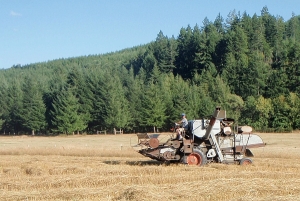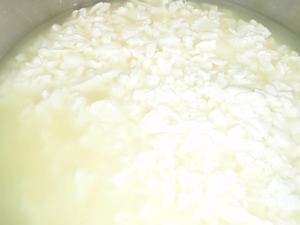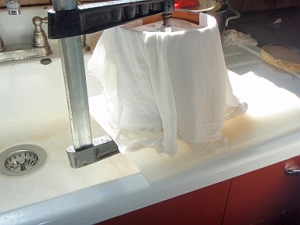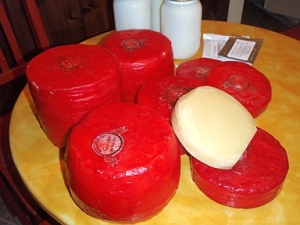First off, I’d like to say thank you for your patience. It has been a difficult year for us, but now that spring is here, it is becoming easier to to build hope and joy into our lives after a dark winter. Again, thanks! And on to the swarm…
A great moment of beekeeping is when a swarm is discovered within reach. I can spend hours watching the “dance” of the bees as they indicate the directions of the future home of the colony. (Although we certainly do not want the bees to follow their directions.)
So far this year, we have caught three swarms of similar size to this one. (approximately 5000 – 6000 bees in each) All three colonies, I’m happy to say, are safely building comb in their new hive boxes.
The pictures below were taken at dusk. I apologize that they are a little blurry, but the subject matter was so compelling that I still had to share them here.
When swarming, bees stay in a tight ball that encircles their queen. The colony masses more tightly deeper inside the swarm. They actually ‘stick’ to each other in the center of the swarm mass. When a swarm wraps a trunk of a tree, I have removed the swarm in sections and gently place them into the hive. They are very docile at this time, and I have yet to be stung in the process.

In this case, the bees wrapped a branch that needed to be pruned. So Nicolae clipped away the smaller twigs, removed the top of the branch, and then removed the branch section containing the bees.
He placed the bees, branch and all, into the box. Overnight the bees moved off the branch and populated the frames where they will build the foundation or comb.
Our boxes are the standard Langstroth hive design. We use two large boxes for brood and the honey used by the colony. Above that we place a queen separator or excluder.
The separator is a wire rack that has narrow channels that bees can move between. Since the queen is a larger bee, she is unable to move into the higher boxes we use for harvesting honey.
These top honey boxes are shorter in height, but can weigh over 50 pounds when full of honey. Durning harvest time, we take the frames out, uncap the comb with a hot knife, and spin the comb-laden frames in a centrifugal machine called a honey extractor.
With three extra hives, I’m looking forward to a very sweet fall!



























